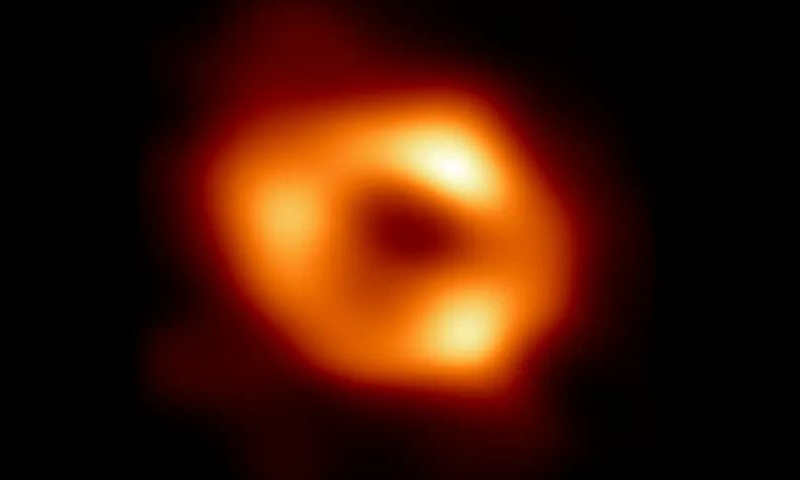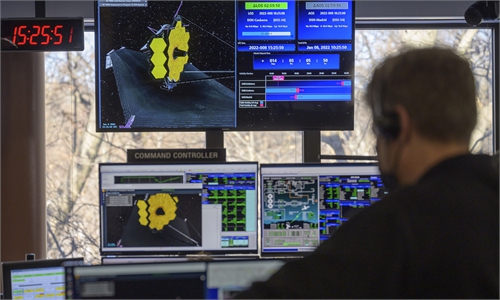
The first image of the supermassive black hole at the heart of the Milky Way Photo: Wechat account of Information Office of Shanghai Municipal Government/Event Horizon Telescope Collaboration
The first image of the supermassive black hole at the heart of the Milky Way was unveiled on Thursday thanks to the efforts of astronomers from around the world, including 17 from China.
The new image was captured by researchers from the Event Horizon Telescope (EHT) Collaboration, using observations from a worldwide network of radio telescopes.
In 2019, the EHT Collaboration released the first direct image of a black hole of Messier 87, a massive galaxy in the Virgo cluster.
The image of this object known as Sagittarius A-star, often referred to as Sgr A*, shows the telltale sign of a black hole, as did the earlier one in the Messier 87 galaxy: a bright ring of superhot glowing material circling a dark center so dense and bottomless that not even light can escape. The way the light bends around the dark center, known as the event horizon, shows the object's powerful gravity which is 4 million times that of our sun, according to a report from The Harvard Gazette.
The new picture provides the first direct visual evidence that the giant, lurking 27,000 light-years away at the center of Earth's galaxy is, in fact a supermassive black hole. It also bolsters theories of where these cosmic monsters exist and may help to explain how galaxies are formed, read the report.
Under the coordination of the Shanghai Astronomical Observatory (SAO), Chinese astronomers attended a preliminary study of the observation and analysis of observation data, the Shanghai government announced on Thursday.
The Tian Ma 65m radio-telescope of the SAO, one of the world's biggest and most powerful, participated in the observations.
Shen Zhiqiang, director of the SAO, told media that the future objective of the EHT is to get video images of the black hole at the center of the Milky Way. He also revealed that China is planning to build submillimeter wave very-long-baseline interferometry telescopes to participate in the observation of Sgr A* around the clock.
Black holes are extraordinarily dense objects with gravity so strong that not even light can escape, making viewing them extremely challenging. A black hole's event horizon is the point of no return beyond which anything, including stars, planets, gas, dust and all forms of electromagnetic radiation, gets dragged into oblivion, according to a report by Reuters.
"This is our supermassive black hole," said Peter Galison, director of Harvard's Black Hole Initiative, a member of the EHT team, and the Joseph Pellegrino University Professor in the History of Science and Physics. "This is at the center of where we live," Galison was quoted as saying in the report by The Harvard Gazette.



